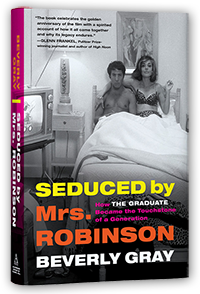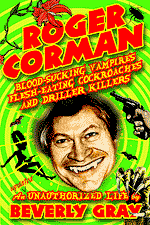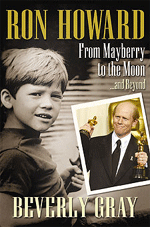Moviegoers get much of their knowledge of the Nuremberg Trials -- in which prominent Nazis had to answer to American military tribunals for their crimes against humanity -- from Stanley Kramer’s 1961 courtroom drama, Judgment at Nuremberg. That long but fascinating film is a rare example of Hollywood royalty banding together to confront an evil from the recent past. Judgment at Nuremberg stars such luminaries as Spencer Tracy, Burt Lancaster, Richard Widmark, Montgomery Clift, Marlene Dietrich, and (in a powerful dramatic role) Judy Garland. It incorporates actual footage shot by British and American soldiers upon entering Dachau, thus becoming the first Hollywood movie to introduce audiences to the piles of corpses and the skeletal survivors that the Nazis left in their wake. But the film is not about the prosecution of infamous Nazi leaders. Instead it’s a fictionalized look at the Judges’ Trial, in which prominent German jurists of the World War II era were called to account for their handling of the odious racial laws of the Third Reich. As a film it’s slow going, but definitely worth the effort.
Jack El-Hai may love movies, but he writes books. In the past he’s explored such troubled (and troubling) men as Walter Freeman, known as the Father of the Lobotomy. The Lobotomist was made into a PBS American Experience documentary in 2008, and has been optioned for a motion picture adaptation. Now Jack has turned his attention to the aftermath of Nazi Germany. The result is The Nazi and the Psychiatrist, which chronicles the coming together of two complex and fascinating figures, German Reichsmarschall Hermann Göring and the pioneering American psychiatrist who observed him as he languished in a Nuremberg prison cell.
Major Douglas McGlashan Kelley, grandson of a Northern California lawyer obsessed with the fate of the Donner Party, was sent by the US Army to maintain the mental health of Nazi prisoners awaiting trial. That’s how he came to rub shoulders with such notorious men as Hitler’s deputy Rudolf Hess, Nazi propagandist Julius Streicher, and Hans Frank, the brutal governor-general of Nazi-occupied Poland. Kelley’s early use of the Rorschach inkblot test was one way through which he sought to explore whether top Nazis shared a common psychological profile. In this he was particularly drawn to Göring, a deceptively cartoonish figure whose intelligence and highly theatrical nature in some ways mirrored Kelley’s own.
Göring, for his part, clearly looked forward to his frequent interaction with Dr. Kelley. When, with the Nuremberg trials not yet over, Kelley announced that he was returning to civilian life, the Reichsmarschall wept. Before Göring met his fate (in a way that I will not spell out here), Kelley was back in the U.S. In 1949 he was named Professor of Criminology at the University of California, meanwhile advancing his career by consulting with police departments and others regarding the criminal mind. Director Nicholas Ray, for one, consulted with him while making Rebel Without a Cause.
Adept at stage magic, Kelley tried to tap into early television by launching a reality series called Fakes, Frauds, and Fools. It didn’t fly, but he received $50,000 to help create and host a twenty-part educational TV series, Criminal Man. In the long run, Kelley – with his love of showmanship – became his own worst enemy. Author Jack El-Hai, who himself doesn’t lack for dramatic flair, begins his book with a prelude that left me gasping. Where did he find the model for this decidedly cinematic opening, one that tours Kelley’s last home and plants hints of what lies ahead? From, of course, the original trailer for Hitchcock’s chiller, Psycho.








Very intriguing stuff - and with some real scope - going from Germany to Hollywood and ending with Hitch. I'll add the book to my Amazon Wish List.
ReplyDeleteI think you'll find this book fascinating, Mr. C.
ReplyDelete